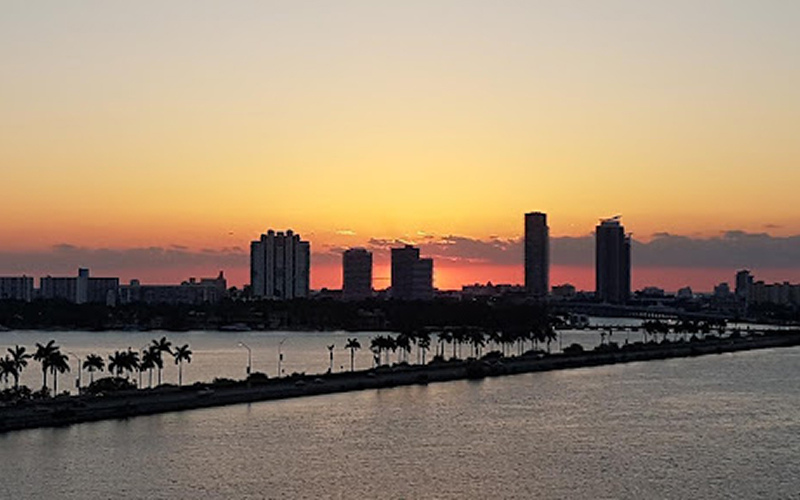Miami’s identity is inseparable from the Cuban community that has helped shape it for over six decades. Since the first waves of Cuban immigrants arrived in the 1960s, fleeing political upheaval and seeking a better life, they brought with them not only resilience and entrepreneurial spirit but also a deep culinary heritage.
As we will see in this article, Cuban culture has not just influenced but elevated Miami’s food scene, turning the city into one of America’s tastiest melting pots.
A foundation of flavour
At the heart of Cuban cuisine is comfort food: soulful, slow-cooked, deeply seasoned. Dishes like ropa vieja (shredded beef in tomato sauce), lechón asado (roast pork), and picadillo (ground beef with olives and raisins) became cornerstones of Miami menus. But it wasn’t just the recipes that migrated – the spirit of sharing meals, feeding communities, and expressing culture through food also made the trip across the sea.
Cuban restaurants, bakeries, and ventanitas (walk-up windows) became staples across Miami neighbourhoods like Little Havana, Hialeah, and Westchester. Their presence provided more than sustenance; they offered a taste of home, preserving identity while enriching the broader local palate.
The rise of the ventanita
Perhaps the most iconic image of Cuban food culture in Miami is the ventanita. These humble takeout windows serve as social hubs where locals gather for small talk and strong coffee. The cafecito, a potent Cuban espresso sweetened with sugar, has become so ingrained in Miami life that 3:05 p.m. is jokingly referred to as “cafecito time” citywide.
Alongside the coffee, you’ll often find croquetas, pastelitos, and empanadas – small bites with huge cultural impact. Cuban coffee culture has turned Miami into a city that runs on espresso with a side of conversation.
The Cuban Sandwich: a culinary icon
The Cuban sandwich, with its layers of roast pork, ham, Swiss cheese, pickles, and mustard pressed between Cuban bread, may have origins in Tampa, but it found its spiritual home in Miami. Local twists include garlic butter-brushed bread and spicier mustard, and it’s become a go-to meal from delis to high-end restaurants. It’s a symbol of Cuban-American fusion: simple, bold, and undeniably delicious.
Desserts and bakeries that changed the game
Cuban bakeries have also revolutionized Miami’s dessert scene. Classics like tres leches cake, flan, and guava pastries are now beloved by locals of all backgrounds. Establishments like Versailles, La Carreta, and Islas Canarias aren’t just Cuban favourites; they’re Miami institutions.
More recently, modern Cuban-American bakers are experimenting with traditional flavours in new ways: think guava-and-cheese doughnuts, cafecito-flavored ice cream, and croqueta-stuffed buns. The blend of nostalgia and innovation keeps Miami’s dessert scene exciting and inclusive.
Culinary entrepreneurship and economic vitality
Cuban culture has also fuelled Miami’s culinary entrepreneurship. Generations of Cuban-Americans have opened restaurants, food trucks, coffee stands, and catering businesses, turning culinary passion into prosperity. This has helped Miami stand out nationally as a food destination that’s not only delicious but also deeply personal.
The entrepreneurial impact goes beyond Cuban food alone. The Cuban community has helped normalize fusion cuisine in Miami, encouraging creative chefs to blend Caribbean, Latin American, and even Asian flavours with Cuban staples.
A legacy of inclusion
Most importantly, Cuban food has helped define Miami as a city of inclusivity, warmth, and shared cultural pride. Whether you’re a tourist grabbing a cortadito for the first time or a lifelong resident biting into abuela’s homemade arroz con pollo, you’re participating in a food culture that celebrates heritage and invites everyone to the table.
Cuban culture hasn’t just influenced Miami’s food scene; it has elevated it, grounded it, and made it iconic. From street corners in Little Havana to five-star kitchens in Brickell, the flavours of Cuba continue to nourish Miami’s body and soul. In every croqueta, café con leche, and pressed sandwich, there’s a story of migration, adaptation, and joy – and that’s a story worth savouring.

